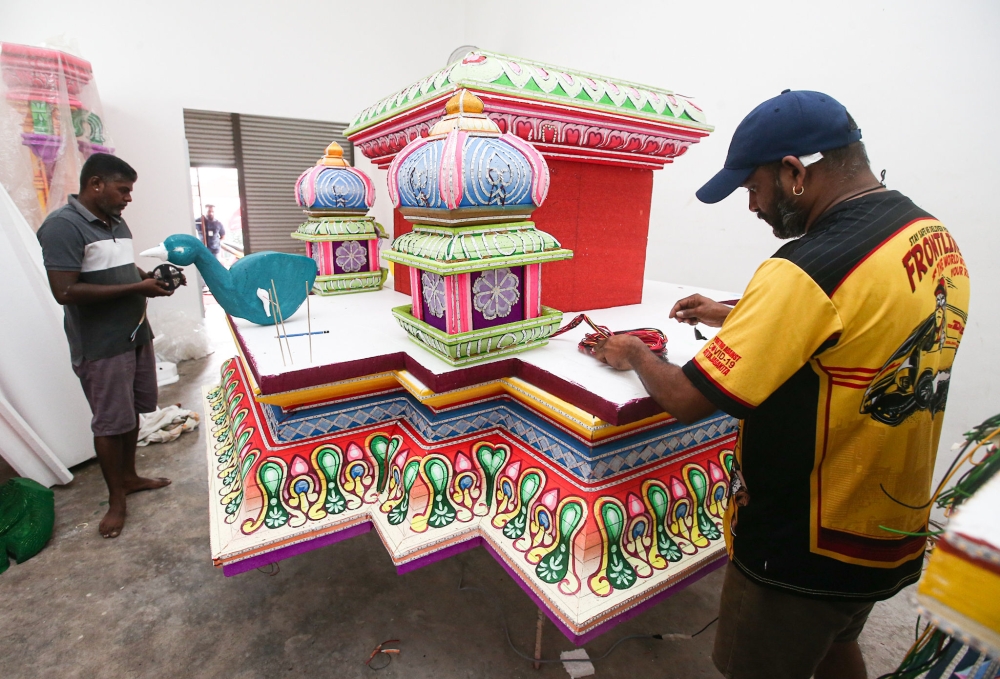IPOH, Jan 30 — Kavadi makers and bearers here are relieved there will be no restrictions this Thaipusam after the ceremony was banned last year due to Covid-19.
However, kavadi makers said they started work late for this Thaipusam as the fear of a ban still lingered as they lost thousands of ringgit when restrictions were in place.
Iruthiyam Sebastiar Anthonisamy, who has been making kavadis for nearly 40 years, said they had no choice but to delay the kavadi-making as there were still cases of Covid-19 reported and only obtained permission a few weeks ahead of the festival.
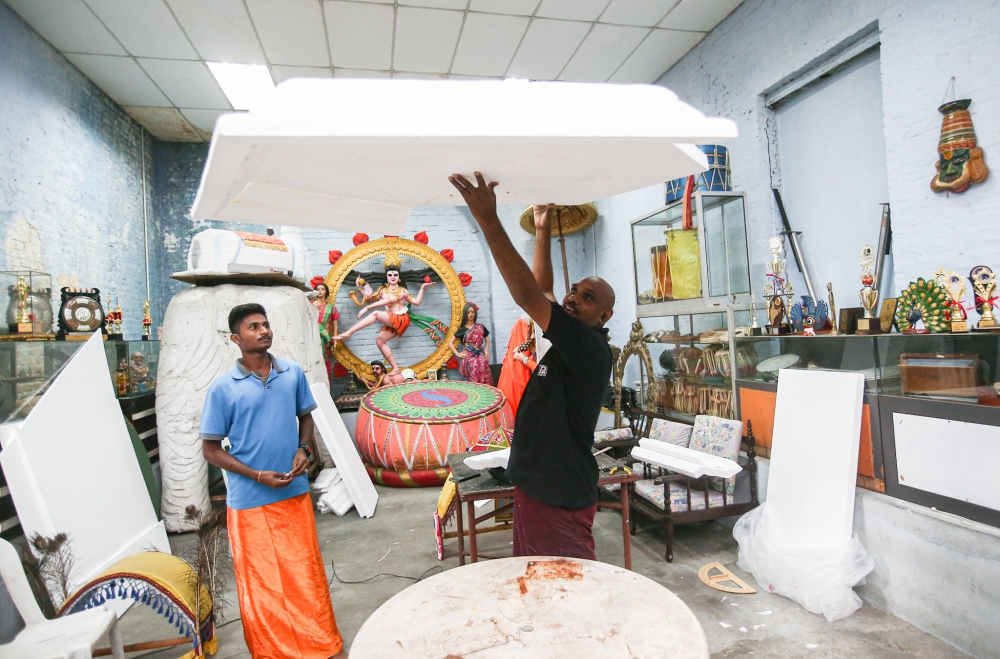
“Kavadi makers were still uncertain whether the kavadi ceremony will be allowed this year. Work only started two weeks ago after getting permission from the temple president,” he said.
Iruthiyam said that kavadi preparation usually starts two or three months before Thaipusam.
“The kavadi bearer will usually start fasting 48 days before Thaipusam as it is a ritual that needs to be fulfilled by the bearers. Similarly, some kavadi makers will also fast 48 days while making the kavadi.
“Since Covid-19 cases are still present this year, some kavadi bearers have actually postponed their kavadi vows to the following year. They’re not willing to take the risk like others,” he said.
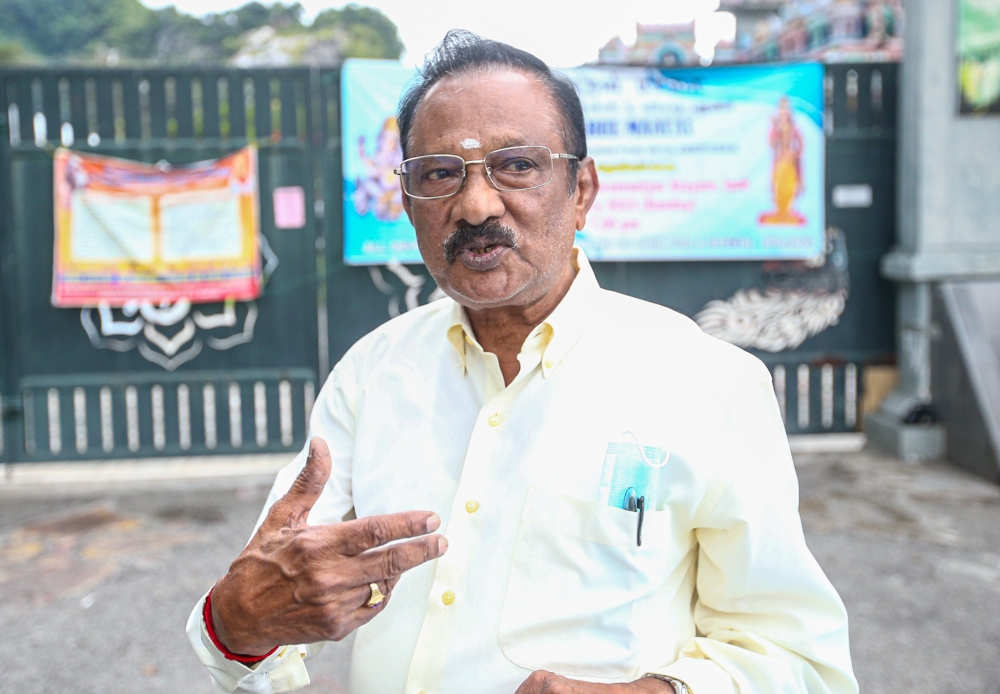
Last Friday, Ipoh Hindu Devasthana Paripalana Sabah president M. Vivekananda told Malay Mail that there are no restrictions or ban on the kavadi ceremony this year as everything is back to normal.
The word kavadi means “burden,” and is carried by worshippers during Thaipusam as a ritual offering to seek divine intercession.
It can be as simple as a pole, but can also be so intricate as to be considered works of art.
Iruthiyam said that most of the kavadi bearers opted for the small kavadi known as Arumugam kavadi, which is made of light materials such as coconut leaves, rotan, peacock feathers for this year’s festival.
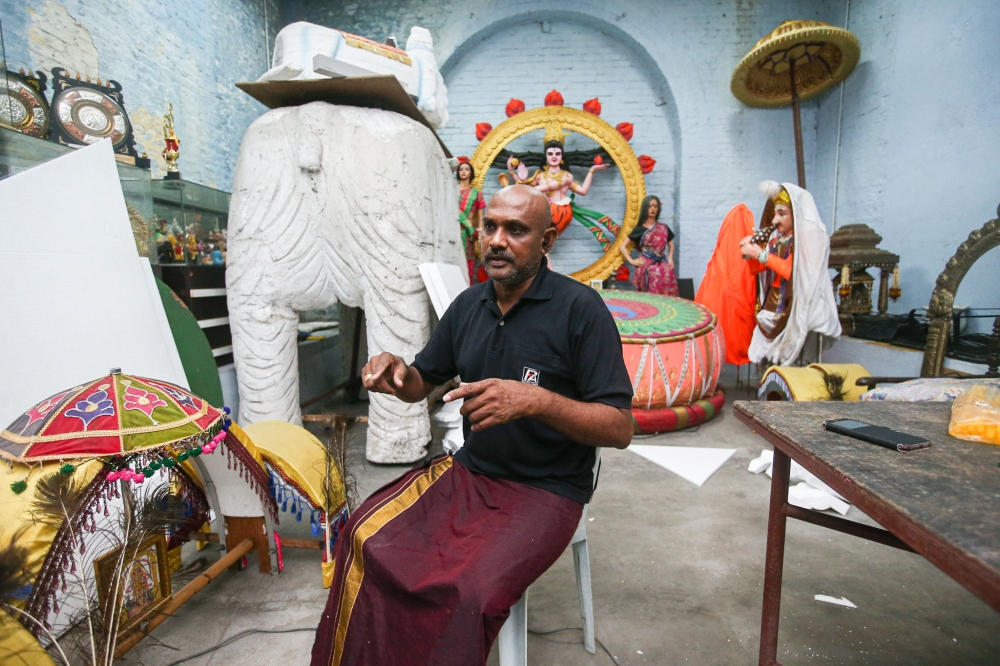
“In those days, there was only Arumugam kavadi. So somehow it is good to see people are actually going back to the traditional culture of celebrating the festival,” said Iruthiyam, adding that there were also other big kavadis and chariots costing up to RM20,000.
He also explained that the kavadi is usually custom made based on the preference of the kavadi bearers.
“The structure of kavadi has to be of the right weight as the kavadi bearers need to carry them for about seven to eight kilometres. So it all depends on the individuals... on how much weight they can carry,” he said.
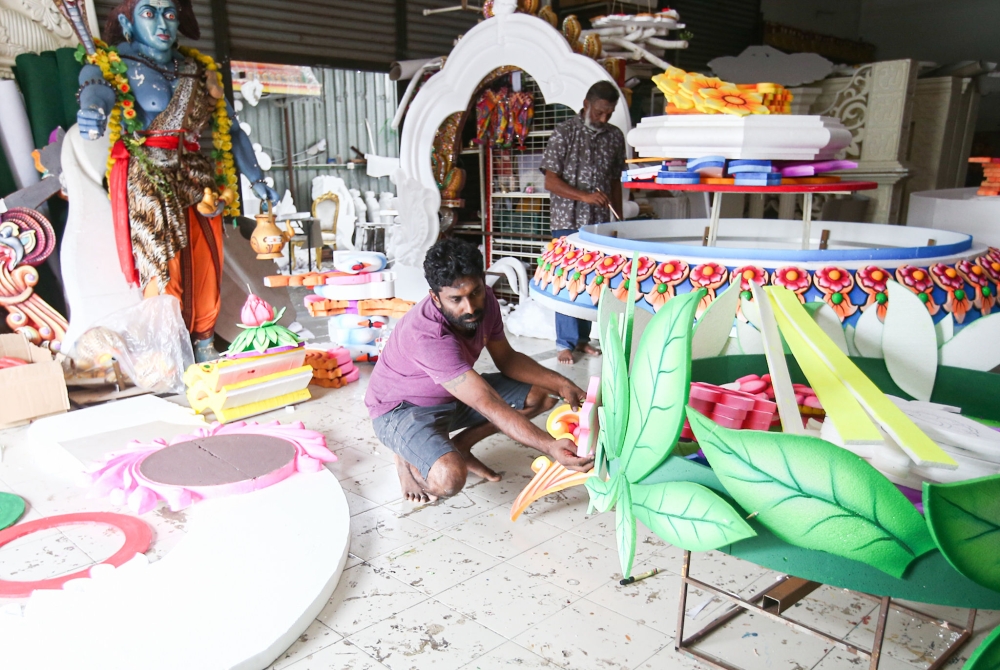
Another kavadi maker, Nadarajah Palani, 54, who has been making kavadi for 30 years, said that this year they will be making six kavadis and two chariots.
“The work started two months ago and is going smoothly. We are at the final phase now. Once all the painting works are done we will assemble the kavadi. In fact, some only have minor works to be done,” he said.
Nadarajah also said the kavadi this year has unique designs and structures and will definitely attract the attention of devotees and visitors.
“The most expensive one is usually the kavadi that has LED. The process of making the kavadi will also be difficult as it involves wiring works. The LED kavadi could cost up to RM40,000,” he said.
